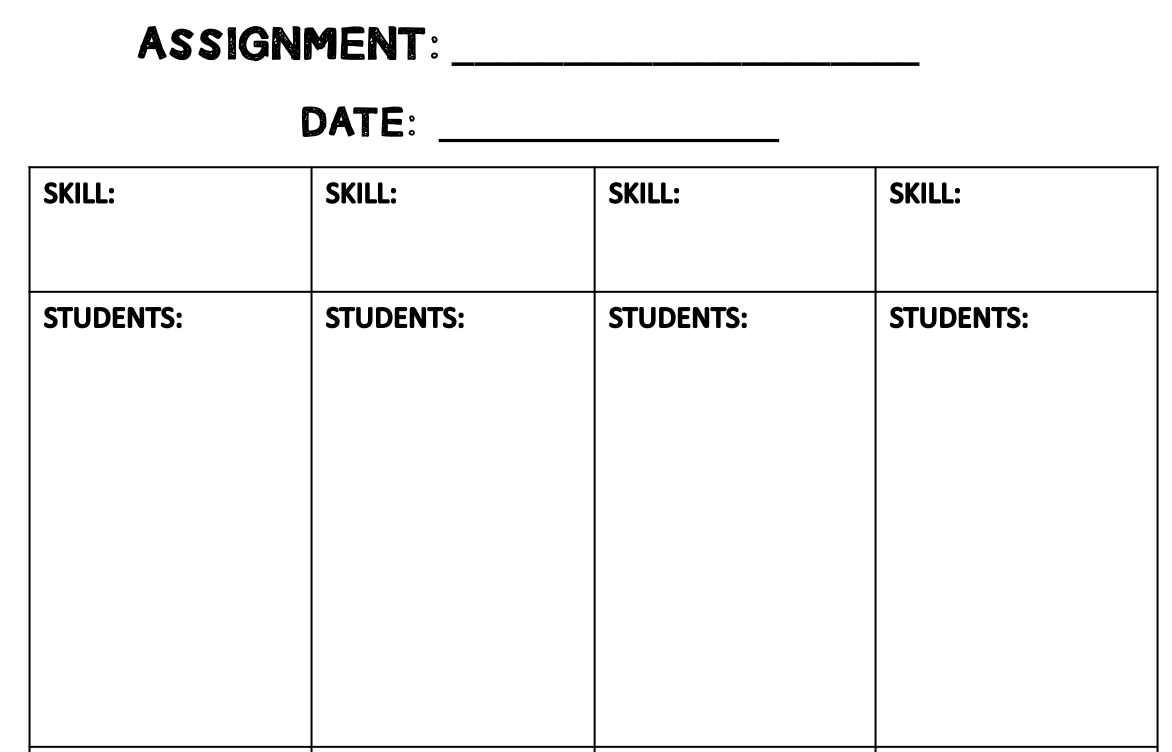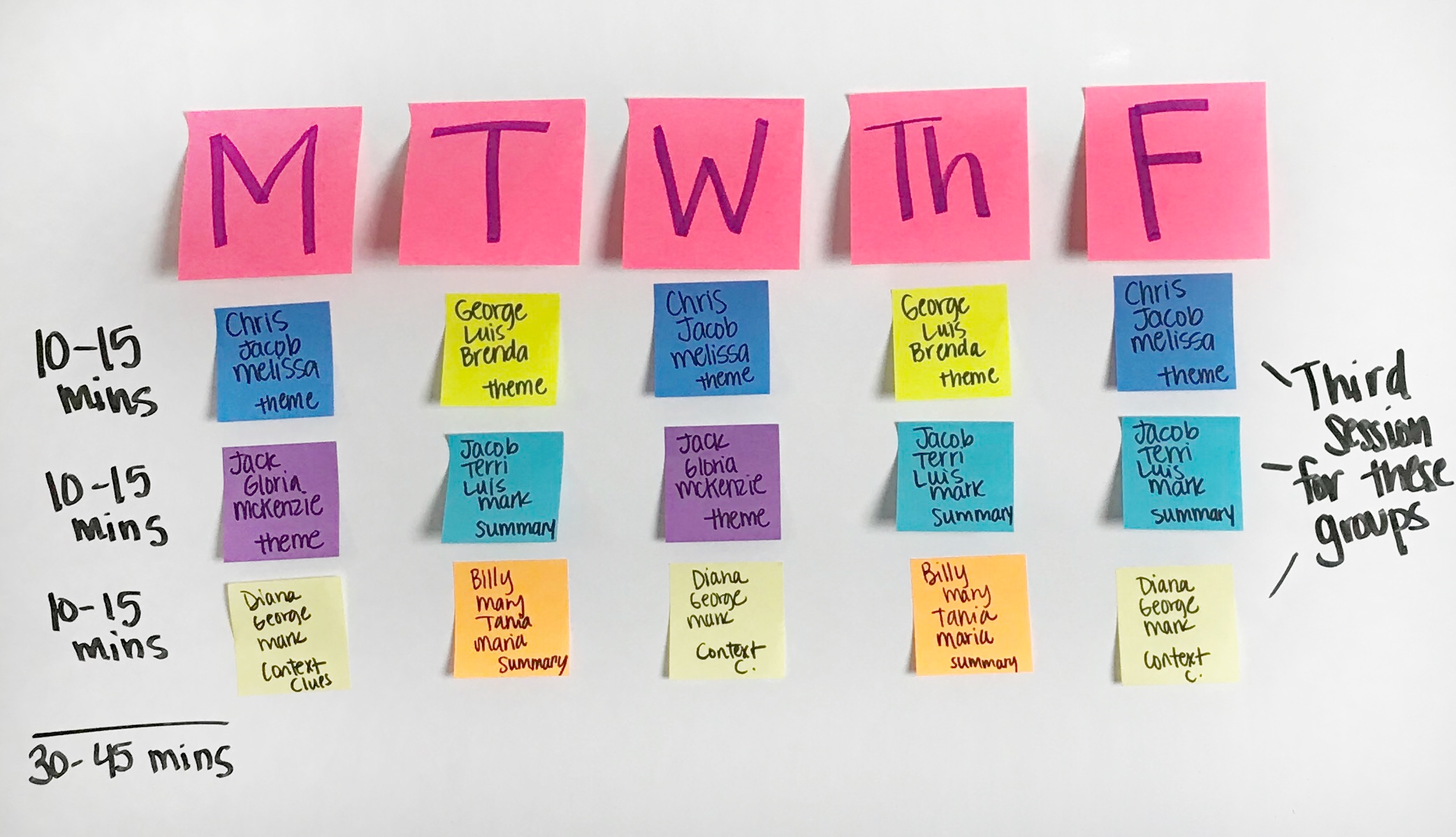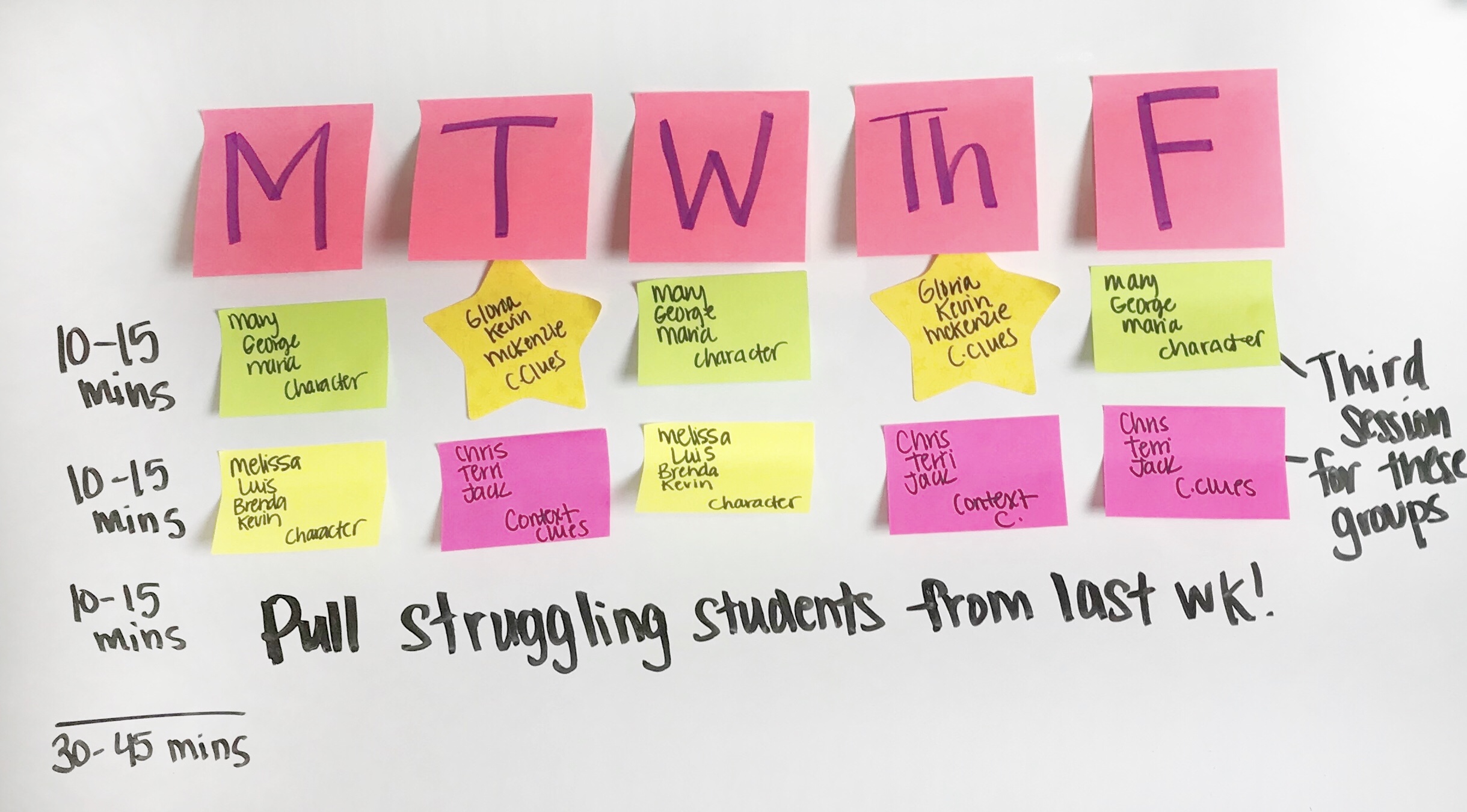In a perfect world, every student would understand your whole group mini lesson the first time you taught it. Unfortunately for us, we do not live in a perfect world. Enter student data. It’s a topic that can spiral out of control and go in a million directions. In this post, I’ll try my best to stay focused on the following two items: how to organize the data based on the standards and how to map out a reteach plan.
Let’s pretend like you’ve graded all of your assignments, tests, quizzes, homework and running records, and you still don’t know what to do. Well, you’re not going to like what I’m about to say, but the answer is to go back to your data and DIG DEEPER. Yes, deeper. It’s not enough to look at the overall grades and reteach that way, because where’s the focus in whole group reteaching? You’ll find yourself reteaching to several students who do not need a repeat lesson or students who will continue to be lost, because those students actually NEED to see you in a small group setting.
OK, so where do you start? First, you have to identify what TEKS or Common Core Standards are included in the assignment you are grading. Standards aren’t unicorns who only show up on tests. 🙂 They’re everywhere! You may think that your students are simply jotting on sticky notes while they read, but did you know that there’s a standard tied to that STJ? Yes! Look around your classroom and you will find unlimited student data.
Here’s a sheet I like to use when I’m grading an assignment, a test, a quiz, a reading response, etc. It’s available on my TPT store by clicking here. FYI: it’s editable!

Whenever I’m grading papers, I like to write out the skills that were “tested” in that particular assignment and make note of every student that missed that skill as I’m going through the papers one by one. (When I first introduced this data analysis sheet to my teachers, it was an eye opener for so many of them.) At the end, I might have something that looks like this. Obviously the names and skills are made up solely for the purpose of this post. Join me as I play pretend.

I’m noticing that so many of my students are struggling in these four skills. Hmmm… what do I do now? The answer is: start planning for small groups. This sheet already tells me what groups I need to make. Whoa, that’s half the battle -awesome!
Here’s a glimpse of what my thinking sounds like as I organize students into groups.
I’ll probably need to make 2-3 groups for each skill. My first group for theme is probably going to be: Chris, Jacob and Melissa, because they’re on a similar reading level. My second group for theme will be: George, Luis, and Brenda, because they’re also struggling with characters changes and it will benefit them to stay together as a group. Finally, my third group for theme will be: Jack, Gloria and McKenzie. For summary, my first group will be…
Next, I need to come up with a weekly schedule to ensure I get to meet with as many students as possible at least twice a week to review theme, summary, context clues and character changes. I’ll also need to retest them after a week of working with them to ensure they have mastered that skill. If they are still struggling after two sessions, I will need to do another session or even another week of practice. Here’s what my groups and schedule might look like for the first week of reading workshop.

Let’s pause to talk about the schedule I posted above. First, you’ll notice that not everyone is listed on this schedule, because it’s almost impossible to see everyone for reading in one week. The best way to ensure you see everyone at least twice a week is to pull the students you didn’t get to see for reading during your writing workshop time and reteach them a writing lesson instead. Remember, reading and writing are married to each other! Developing writing skills is just as important as becoming an excellent reader. Second, you’ll notice that the blue, aqua, and yellow groups were pulled for a third time on Friday. As I mentioned before, some groups will need to see you more than twice a week to reach mastery. Finally, this schedule gives you 30-45 minutes to pull three (3) small groups during independent reading time. It’s tight, but trust me, it can be done. OK, so what about the other students that still need reading intervention for context clues and character changes? Well… here’s the following week’s schedule:

The second week is a little more open, because you don’t have as many groups to try to fit in. Keep in mind that even though you have an extra 10-15 minutes this week, you should still find the time to pull a small group or confer one-on-one around the room with several students.
What you teach during small group is really dependent on the assignment and how that skill was assessed. I like to demonstrate during small group. Therefore, I start the first 2-3 minutes modeling for them what I expect them to do. Afterwards, I allow them time to practice in front of me as I jot down notes on their reading behaviors. (These notes will prove to be beneficial when it’s time to shift students around for the upcoming weeks.) MORE IMPORTANTLY, I coach in to them as they’re reading in front of me. I allow them to continue to practice and then I push them back out to pull another small group with a new set of students. On the second day, I’ll do even less modeling because I want the majority of the time I spend with them to be a time where they get to practice that skill in an organic fashion. At the end of that session, I’ll give them a quick assessment (exit ticket) to confirm mastery. If I notice that one particular group is continuing to struggle during day two, then I make adjustments to pull them for a third day that week.
I’m a firm believer in data analysis. You learn so much about your students from reading their reading responses or even studying their running records. It’s so important for teachers to take the time to learn their students’ strengths and areas for improvement. I will be the first to admit that once I analyzed the data and created my schedule, I was nervous to start pulling my small groups. In the beginning, it was difficult to pull three small groups a day for each subject (so technically six), but soon enough, I found my rhythm and I was on a roll! It takes time and practice. Remind yourself to be patient and know that you are doing the best you can.
Don’t forget to comment below! Thanks for reading.